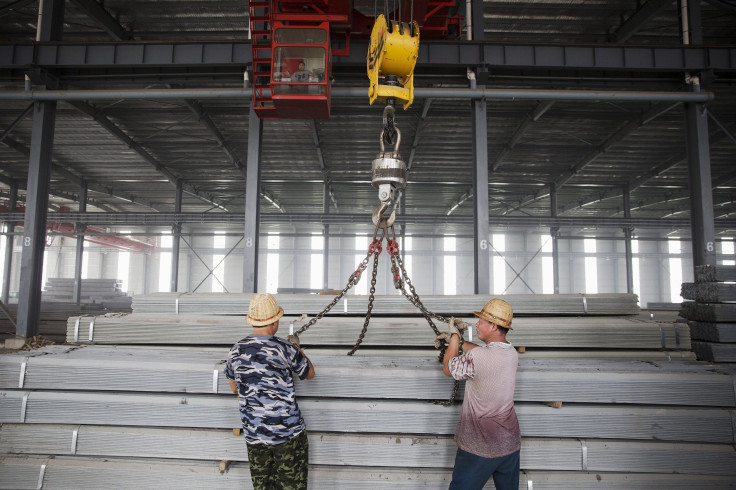With China Central Bank Interest Rate Cut, Investors Cheer, Economists Worry

Although China’s surprise, middle-of-the-night move to cut benchmark interest and deposit rates Friday is yet another sign of weakness in the world’s second-largest economy, investors around the world are taking the news as a positive sign that Chinese central bankers are actively engaged in efforts meant to stimulate growth.
Markets in Europe and the U.S. rallied on the news. The FTSE index of European stocks climbed 1.1 percent on the day, and the S&P 500 erased the last of summer’s losses, bringing 2015 into the green again.
“This interest-rate cut is the latest card China’s government is playing in order to right its economic ship,” said Gregory Stoller, an expert on Chinese economics who is a senior lecturer at the Boston University Questrom School of Business.
The People’s Bank of China (PBOC) complements the rate cuts --- its sixth round in 11 months -- with measures easing bank reserve requirements.
Despite these repeated rounds of monetary-policy accommodation, strained Chinese businesses were still facing real interest rates on the rise, said Alessandro Theiss, a China economist at Oxford Economics. In its announcement, the PBOC said its moves were aimed “to create a favorable monetary and financial environment for economic structural adjustment.”
That means extending a helping hand to flagging industries. “The biggest downward pressures on growth are the downturn in real estate and the weakness in heavy industry,” Theiss said. “Most of the really highly indebted companies are in these sectors.”
Beijing’s official data show headwinds in the Chinese economy, with its growth in gross domestic product falling to a six-year low of 6.9 percent in the third quarter, compared with 7.3 percent in the same period in the previous year. And analysts point to evidence of a deeper funk. Chinese equity markets moved from correction to bear-market territory in the middle of this year. And the country’s producer price index fell to a historical low of -5.9 percent in September, signaling a steep decline in domestic demand.
China’s interest-rate cut came a day after European Central Bank President Mario Draghi opened the door for further monetary easing in the eurozone, citing continued economic unease and low growth.
The rate cut should appear on the radar screen of the U.S. Federal Reserve, whose chair, Janet Yellen, held onto expectations that the Fed’s rate-setting committee will opt to raise historically low benchmark interest rates by the end of the year. In the Fed’s September announcement that rates would remain near zero, Yellen cited falling demand from China as a potential economic hurdle in coming months.
For worried stateside investors, the prospect of cheaper Chinese credit could be welcome. “Internationally, the perception of these stimulative measures is generally positive,” Theiss said. “It shows that the Chinese authorities are aware of the weaknesses the economy is facing.”
But not everybody is sanguine about the move. Many analysts predict at least one more rate cut from China by the end of 2015, as growth continues to sag. “We’re still waiting for clear evidence of an economic turnaround,” analysts at Capital Economics wrote in a note to investors.
Others see evidence of China delaying the inevitable. Speculation in real estate followed by a rush into the stock market helped drive successive credit bubbles in China that have still not fully deflated. “We’re not close to the deleveraging,” Theiss said.
In a note Friday, economist David Levy took China’s rate cut as a sign of a coming global economic shakeup. He wrote, “China has been growing so long with huge overinvestment that it needs to slash investment so much that the other profit sources cannot make up the difference.”
© Copyright IBTimes 2024. All rights reserved.






















